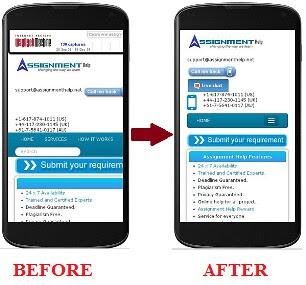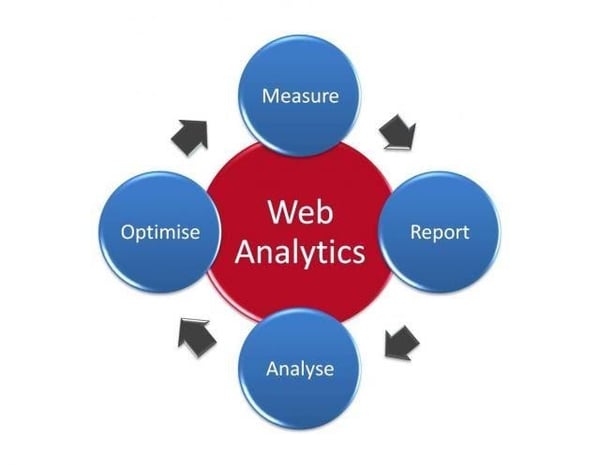April 28, 2020
 by Gary Stevens / April 28, 2020
by Gary Stevens / April 28, 2020

Running a small business has never been so difficult.
A decade ago, new systems and technological tools appeared once every few years, and small business owners could easily stay on top of them. Now, the pace of technological change is so great that each year brings revolutions in the way that we do business.
Some things stay the same, of course. It’s still important to measure your KPIs and have a solid content marketing plan.
But recent research indicates that most small businesses expect their IT budgets to grow over the next 12 months in order to take advantage of new technologies. In this article, we’ll take a look at the key trends in technology that all small businesses should know about.
The technologies that you invest in as a small business owner are arguably the most important decision you will make. Identifying a business process that can be automated, improved, or made more efficient via technology can dramatically improve your productivity, and ultimately improve your profit margins.
When looking to upgrade the technology you use, careful planning is key. You should never invest in software or hardware just because it is generating a lot of hype. Instead, and like any business decision, the technology you deploy should be informed by your strategic business goals.
There has never been a better time for small businesses to invest in technology, and the stats are a good indication of this. Deloitte found that relative to businesses that have low levels of digital engagement, digitally advanced small businesses realized significant benefits.
That means these businesses:
Despite these clear benefits, however, the same research found that 80 percent of US small businesses aren’t taking full advantage of the digital tools available to them. Let’s take a look at the key tools that are available, and how they can help your business.
First, you had a website, then you had a mobile website. But now, that’s no longer enough. Customers now want a complete online experience. That includes the ability to make mobile payments in store and online. It also means integrating your marketing and e-commerce shop with the way that most people use their smartphones.
Thirty-two percent of shoppers changed their minds about purchasing items after checking out the product information on their mobiles within brick-and-mortar stores.
Building this kind of mobile experience need not be expensive. First, you should do your research on the factors that affect the feeling of your website, and make sure that it is mobile-friendly. You can then use a site builder.
Research shows that site builders cost 20 times less than a dedicated developer, and the best of them will allow you to build a great mobile experience even with limited technical knowledge.

Tractica, a research firm, has found that the total global revenue for AI software is expected to grow from $9.5 billion in 2019 to as much as $118.6 billion in 2025. A lot of that growth is being driven not by tech giants like Google, but by the gradually increasing availability of AI tools for the average business.
There has been much speculation about which jobs AI will eliminate, and which it won't, but at the moment a couple of key trends are visible. AI is predominantly being used to inform marketing campaigns since it can analyze the vast amounts of data generated by web analytics much more quickly than its human competitors.
This brings us to another key trend for small businesses currently, advanced web analytics. If you are still using the basic tools provided by your web host to analyze traffic to your site, you are going to be blown away by the level of detail now available from analytics systems.
Much of the data these systems provide will be familiar to small business owners, but having the numbers on the way that your system performs can be invaluable in generating new insights into your business performance. In turn, these data will have impacts on every aspect of your business, from how you approach online advertising to how you calculate business loans.

The value of working remotely has long been recognized by many small business owners. In 2020, we're seeing increased popularity of the tools that allow staff to effectively collaborate online.
These tools range from online communication platforms to advanced business phone systems and are transforming the way that many small businesses think about their workforce. Once the benefits of remote working start to be seen on your bottom line – increased productivity, and hugely decreased fixed costs for renting an office – it may be hard to go back to the traditional way of doing things.
User reviews have always been important, but today they're more important than ever for two key reasons.
The first is that the Google algorithm that drives the ranking of sellers on Google search has recently been updated to include customer reviews. This means that improving your customer reviews is not only going to drive sales; it’s also critical in ensuring that customers can find your business online.
The second reason for this is that the kinds of AI tools mentioned above can be deployed against the data generated by customer reviews. Some AI technology can now perform advanced analysis that generates customer insights directly from your reviews. For this reason, many small business owners are actively reaching out to their customers and asking them to give feedback and testimonials.
Finally, a highly visible trend has been the introduction of voice control to many consumer devices, and the deployment of chatbots on small business websites. Voice control is a key part of the mobile experience, and the rise of chatbots is due to the increasing availability of AI tools. While using these tools might be a bit much for small businesses, you need to be aware that in a couple of years they will be standard. So start preparing now.
Given the range of tools available for the average small business, it can be difficult to see exactly how each can be used to realize tangible advantages for small businesses. Recognizing the growing importance of AI is great, for example, but how does this translate into changes to your everyday workflow?
In this section, we’ll show you how to use the techniques above to transform the way that your small business works.
One of the major benefits of the kind of web analytics we’ve mentioned above is that these systems allow you to see exactly how your customers are using your website, and you can then target your advertising and outreach much more effectively.
One of the most common insights that such systems generate is that customers abandon their shopping cart or visit a particular page. This is typically not an indication that they do not find the content on that page useful.
Quite the opposite: visitors leave your site on pages like this because they would like to know more about your products, but there is no obvious way for them to do so.
A great way of increasing engagement is to use pages like this to collect email addresses via an opt-in form. This can be linked to a more detailed report or whitepaper, which will encourage your visitors to share their details.
Video conferencing software is great for remote working, but can also be used for other purposes. One way to increase engagement with your audience is to use video conferencing software to host webinars on topics of interest to them.
Doing this has three major advantages. The first is that you can directly connect to key customers, and build a more personal relationship with them. The second is that by sharing your expertise you can begin to build a profile as an expert in your field and begin to establish your brand as a thought leader. Third, webinars put a face to your brand, which can encourage your customers to engage more directly with your business.
AI-driven tools are arguably the most important development in the way that modern small businesses work. AI technologies are revolutionizing almost every aspect of the way that small businesses work, from marketing to web analytics to email outreach campaigns. AI also has a real value, however, in improving the efficiency of your customer service via the deployment of AI chatbots that can automatically answer common customer queries.
If you are worried that using a chatbot will annoy your customers, don’t be. Research indicates that many customers, and particularly millennials, actually prefer to use chatbots to answer basic queries. And as long as you include an option to talk to a real customer service agent if your customers would prefer to do this, you need not worry about your AI system turning away customers.
Cloud storage and file sharing is now standard for large businesses, but small businesses have lagged behind somewhat when it comes to recognizing the value of these systems. Today, there are plenty of off-the-shelf cloud storage solutions that can be used with very little technical knowledge, because cloud providers now typically take responsibility for the security and privacy of their own systems.
Cloud storage is not a new trend, but rather one that complements the other technologies we’ve mentioned above. If you are planning a move to remote working, for instance, then cloud storage is almost a necessity.
Many of the emerging trends in small business technology are essentially focused on the same idea: automating processes that used to be done manually. One such process is appointment scheduling, which used to be a major time sink but can now be automated.
For most customers, the ability to directly book appointments is preferable to having to phone your company, and implementing a system that allows them to do this saves both you and them time and money. The best appointment scheduling systems even include the ability to send appointment reminders to your customers via email or SMS, which helps to reduce missed appointments and ultimately missed opportunities.
Social media outreach roles used to be pretty challenging: in order to achieve the desired level of traction with key audiences, marketers would have to manage several (and sometimes dozens) of separate accounts. Today, leading small businesses have invested in systems that aggregate all of their social media feeds into one place, and allow you to manage all of your social media marketing from one dashboard.
Not only do systems like this save you time, but they also give you greater oversight and control over the way that your customers interact with your business. You can more easily ensure that your brand identity and messaging are consistent across platforms, improving brand recognition and engagement.
For most small businesses, the move to remote working will be gradual and will be facilitated by an investment in a dedicated task management platform. Though these platforms are a necessity for managing remote teams, they also have huge benefits for more traditional, office-based teams.
The ability to delegate daily assignments through task management platforms makes managing teams much easier and much more efficient. These platforms can also dramatically improve the level of communication between employees in small businesses, making collaborative working more efficient and more productive.
What’s going to happen next year? Well, who knows. It's likely that small business owners will need to know how cryptocurrencies work, given the huge spike in their usage this year, but for now, the changes that are already occurring is more than enough to focus on currently. All of the technologies and ideas above are already being rolled out by the best small businesses, and so if you haven’t investigated how they can help your business you are in danger of being left behind.
Just remember that technology is there to help you, not make your life more complicated.
Before you make an investment in new technological tools, make sure that they offer real value to your business. Check out all available solutions for any software you can think of – all on G2.
Gary Stevens is a full-time front-end developer and part-time blockchain geek. He currently lives in Toronto, Canada with his two boys.
Another week, another exciting #G2Fireside Twitter chat.
 by Devin Pickell
by Devin Pickell
We’ve all had an episode of our favorite show or a blockbuster movie spoiled for us because of...
 by Devin Pickell
by Devin Pickell
Ever wonder why your teams struggle to innovate beyond their roadmap? They’re likely too busy...
 by Dan Knox
by Dan Knox
Another week, another exciting #G2Fireside Twitter chat.
 by Devin Pickell
by Devin Pickell
We’ve all had an episode of our favorite show or a blockbuster movie spoiled for us because of...
 by Devin Pickell
by Devin Pickell


